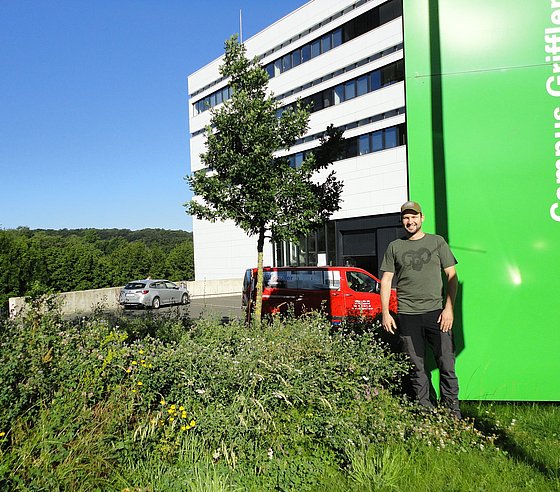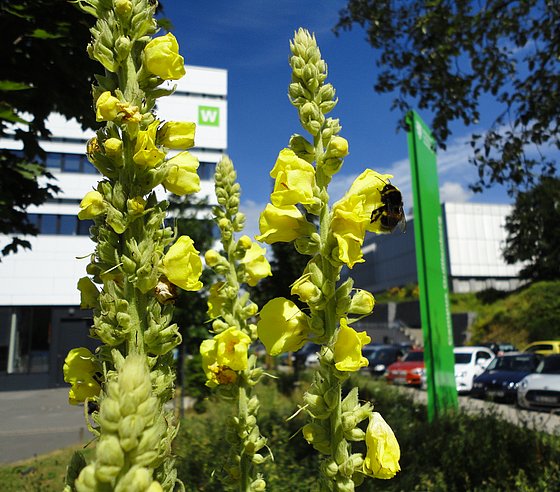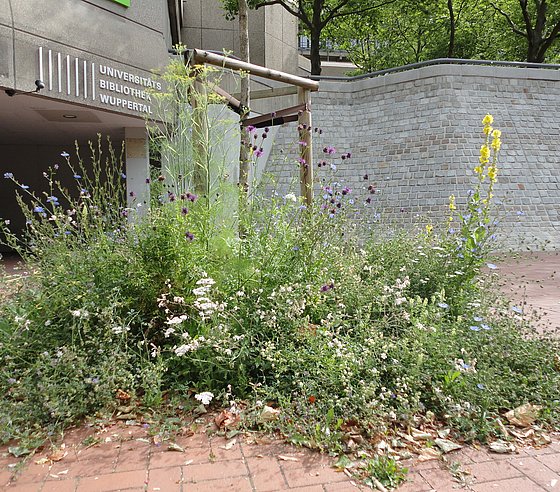


Flower strips & flowering islands
The number of insect species has declined significantly in recent decades. Among other things, the approximately 500 species of wild bee found in Germany have fewer and fewer flowering plants and nesting sites available to them, meaning that more than half of these species are under threat. The decline in flowering plants has numerous causes: on the one hand, species-rich grassland, flowering fields and roadside verges are becoming increasingly scarce in the landscape; on the other hand, many urban areas are being "used up" for transport infrastructure, residential buildings and commercial premises. One way of ensuring more flowering plants and thus counteracting the lack of food for wild bees is to create flower strips.
Ecological benefits of flower strips
Colourful flower strips are generally well-received by the public and attract many wild bees and other insects. However, the number of insect species that are worth protecting and that visit these strips is usually rather low, since many wild bee species specialise in certain plants. Commercially available flowering mixtures are often not adapted to the site and may contain neophytic plants, the spread of which can be problematic. According to Section 40 of the Federal Nature Conservation Act, the sowing of seeds of non-native species in the wild is subject to authorisation.
What to look out for
Where possible, flowering mixtures should contain only native wild plants that flower repeatedly over several years and are adapted to their landscape. Perennial mixtures containing species from the umbellifer, composite or butterfly flower families are favourable. Examples include wild carrot, dyer's chamomile, chicory, various types of clover and vetch.
It is also important to provide a long-flowering food supply for wild bees in order to close flowering gaps in midsummer. In autumn, the faded stems should be left standing, as these provide good winter quarters for animals. The appearance of the flowering strip changes from year to year, as certain plants become more established over time. After a few years, the flower strips become 'exhausted' as only a few species dominate, offering no continuous supply of flowers, or as herbaceous plants are displaced by grasses.
Flower strips at the University of Wuppertal
There are several flower strips and flowering islands on both the Grifflenberg and Freudenberg campuses. These were initiated by Mr Schürhoff, the foreman of Department 5 (GALA Bau). Many students and employees enjoy the colourful blooms on their way to or from the university. If you take a closer look, you can see — and, if you pay close attention, hear — numerous insects in the areas.
